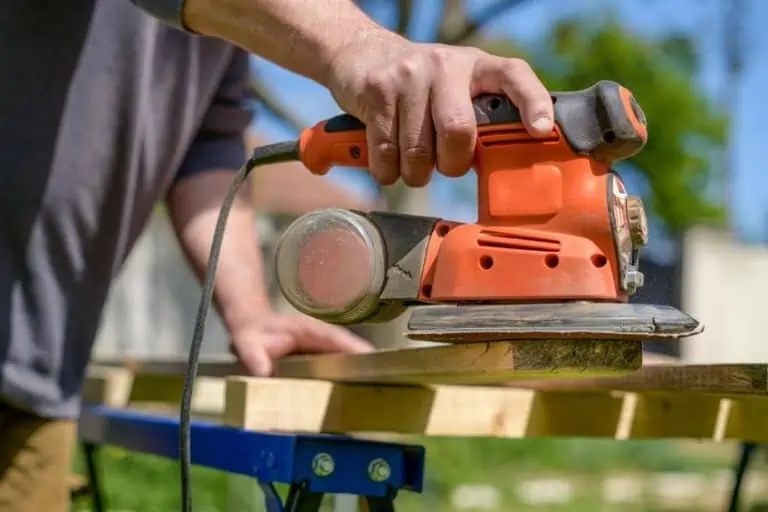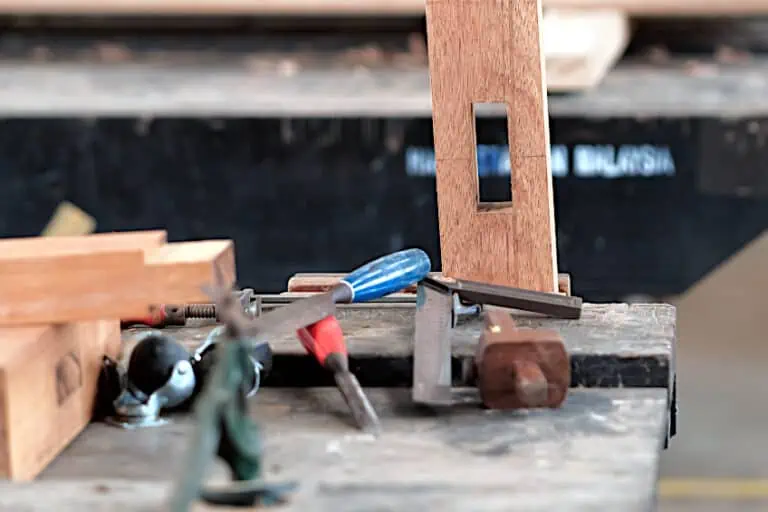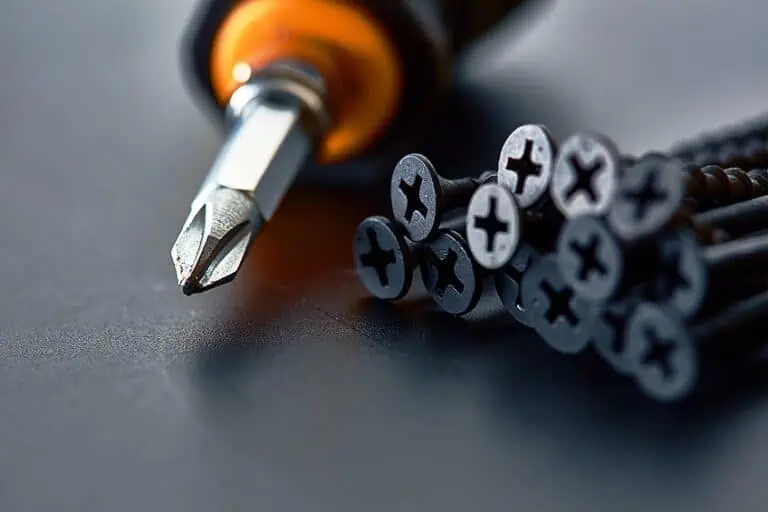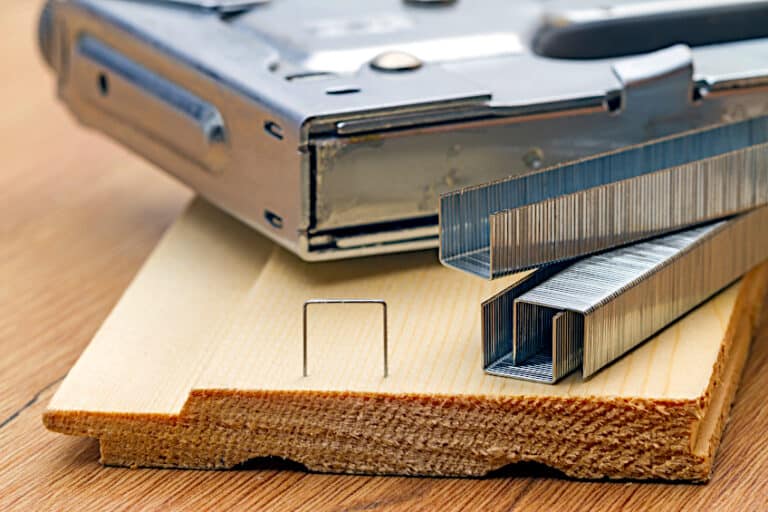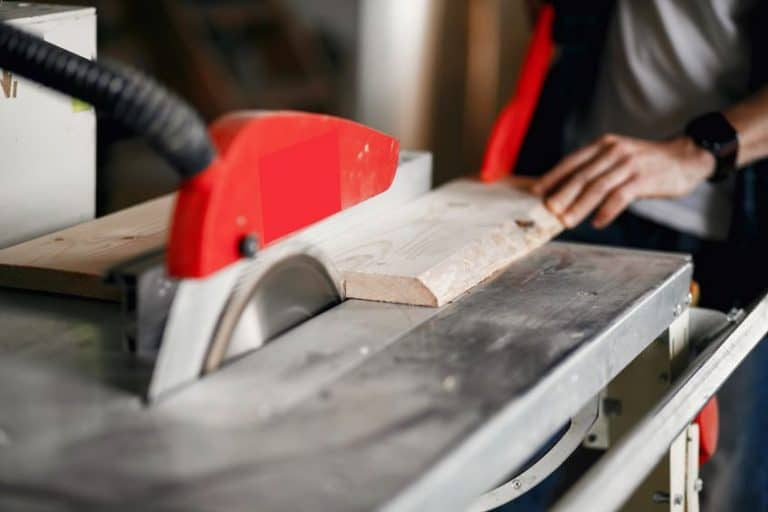How to Sand Furniture for Painting – Steb-by-Step Tutorial
DIY and maintenance can be a very big part of owning a home. If this is something that you are interested in, you will find that sanding is one of the most time consuming and exhausting jobs, especially if you are refurbishing furniture with a new topcoat or paint application. For this reason, you will need the right tool to make the job much faster and easier to do. We have created this guide on the best sander for furniture to help you find the tool that will make the process far more manageable, as having the best sander for refinishing furniture will really make a huge difference to the entire job. Follow our guide below to find out more about the best hand sanders and how to use them.
Sanding in Furniture Restoration
When restoring furniture, the first step is generally to completely sand down the entire surface. This is necessary for getting a smooth and even finish over the wood while removing any existing paint or varnish. Whether you will be repainting the wooden furniture, or adding a clear coat or wood oil, this is a necessary step.
When sanding furniture, there is always one very important consideration: you do not want to ruin any fine details on the woodwork. Particularly with antique and hand-crafted furniture pieces, there can be a lot of details and different shapes and curves in the wood. For this reason, the best sander for refinishing furniture is usually a less abrasive hand sander.
Machine belt sanders may be easier and more efficient to use over a large surface area, but they do not do well with details and curves. If you will be sanding something like a tabletop, then you can use a more intense sanding machine. Otherwise, the best sander for woodwork is generally a gentler hand sander, although this does require a bit more effort. However, it allows you to work over curves and details better without losing the essence of the wooden furniture.
For very fine details, it is best to use a fine piece of sandpaper simply held in your hand. When sanding things like chair and table legs, armrests, cupboards, and drawers, hand sanders are best. These allow you to work faster without compromising the look of the furniture.
Different Types of Sanders
Finding the best sander for woodwork really depends on the type of item you are working on, and the wood that you are using. When looking for the best sander for furniture, you have four different options to choose between. Each one has its own unique advantages and is best suited for specific applications. We have broken down these different types of wood sanders below.
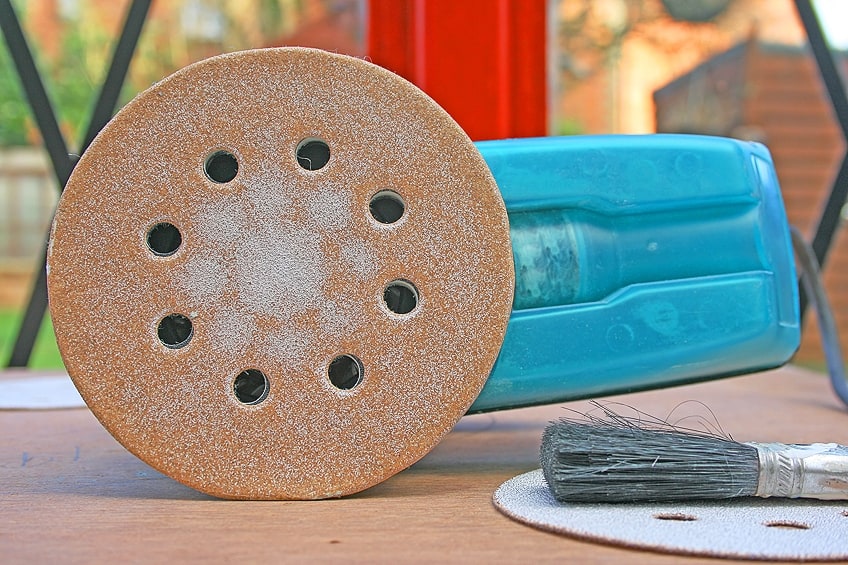
Belt Sander
Belt sanders work with a continually looped belt that moves around on wheels, like a conveyor belt. The motor spins the belt at a high speed, allowing you to make light work of sanding rough surfaces. Belt sanders are the most heavy-duty type of sander. These are great for removing paint and varnish from large areas. Belt sanders are very fast and efficient to work with, but they are quite aggressive tools.
It is best not to use a belt sander if you are working with small details, or if you want to create a very delicate, fine surface. These tools are best used for preparing things like tabletops or cupboard doors. Many people will first use a belt sander to prepare the initial layer of the wood and then go over this with a less intensive hand sander.
Disc Sanders
As you can take away from the name, these types of hand sanders have a round, disc-like sanding surface. They are a pretty good all-round option and provide a middle ground between being a gentle sander and still offering enough power to work over large, rough surfaces. However, they are not gentle enough for detailed furniture sanding.
Also known as orbital sanders, these tools spin in a fixed direction. This makes them a good choice for sanding rough areas and stripping paint. Disc sanders are chosen over belt sanders for two main reasons: they are easier to control (only requiring one hand), and they can get into harder-to-reach areas where a belt sander cannot.
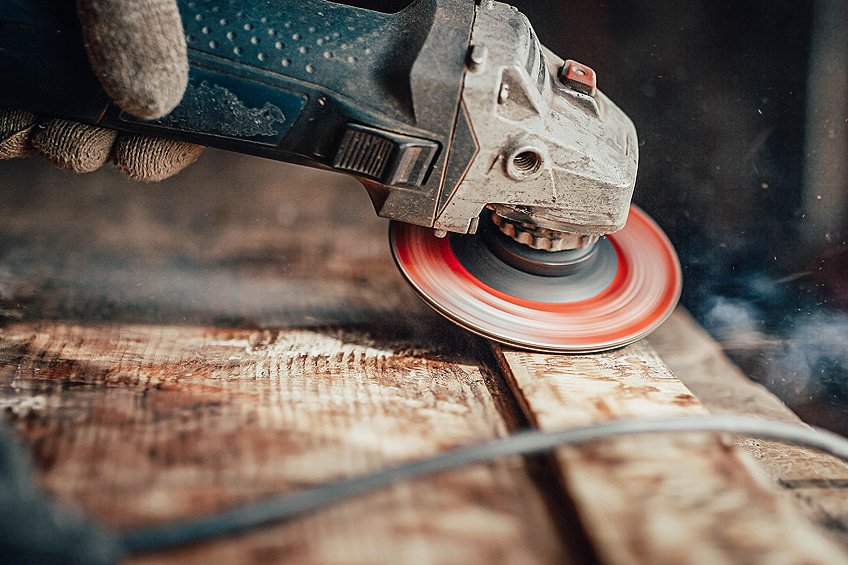
Random Orbital Sanders
This option is the most versatile tool for woodwork. With these sanders, you get a good balance of being able to do heavy-duty sanding and paint removal, as well as creating soft, shiny, finely sanded finishes.
Random orbital sanders look like regular orbital sanders, but there is a distinct difference in the way that they operate. These sanders move in a “random” motion – which is where they get their name from. Instead of just sanding in a fixed pattern, you get an unpredictable motion. This leaves you with a smoother end surface without any scratch marks, which is something that can be a risk when using a regular orbital sander.
This type of sander uses round abrasive paper instead of quarter pieces of standard sandpaper. These sanders are best for use over large areas, such as cabinet doors or thick furniture legs. They are not quite as delicate as other sanders but are far less abrasive than belt sanders. They can also be used with a single-handed operation.
Finishing Sanders
When looking for the best sander for furniture, a finishing sander is usually required. This type of sander is specially made for getting into detailed areas, working over fine curves and shapes that the other types of sanders are unable to do. Finishing sanders use a square or rectangular piece of sandpaper, and they move in either an orbital or in-line motion. The sandpaper is very easy to change, which makes it suitable for quickly changing the grade of the sandpaper.
These sanders are not a good choice for stripping paint, varnish, and working over large rough surfaces. Woodworkers will often prepare a large surface with an orbital or belt sander first, and then use a finishing sander to achieve the right finish on the surface. When working with all sorts of wooden furniture, this type of sander is an important tool to have in your workshop.
How to Use an Electric Sander
Electric sanders differ between models and manufacturers. No matter what type of sander you are using, always check the manufacturer’s guidelines on how to use the product first. Most sanders do follow the same basic principle, however, so you can follow the guide below for a general understanding of how to use hand sanders.
First, make sure that you have the right sandpaper attached. Then, simply turn the sander on and start to use it on the wood. Sanders vibrate and move a fair amount, so be very careful when using these tools for the first time. They should not cause any serious injuries if you sand your finger, but they can negatively affect the finish of the wood if you make a bad move. That being said, always wear your protective gear when sanding.
When sanding the wood, you just need to gently guide the sander in lines over the surface. Make sure that you follow the wood grain and never go against it. Try to use long, smooth motions for the best finish. When you come across tough spots in the wood that refuse to be sanded down, you can apply slightly more pressure, or go over these areas a few more times. However, do not apply too much pressure when sanding the entire surface.
Continue to sand down the surface, changing to finer sandpaper as you go, until you have reached the right finish. You can then finish up any small details with a sanding stick or simply using your hand. Make sure that the entire surface is level, smooth, and evenly sanded. Then, you will need to clean up the wooden surface. This step is really important because if you do not clean it properly, you could end up with sandpaper grit in your paint. For the best results, you should wipe the sanded surface down with a tack cloth.
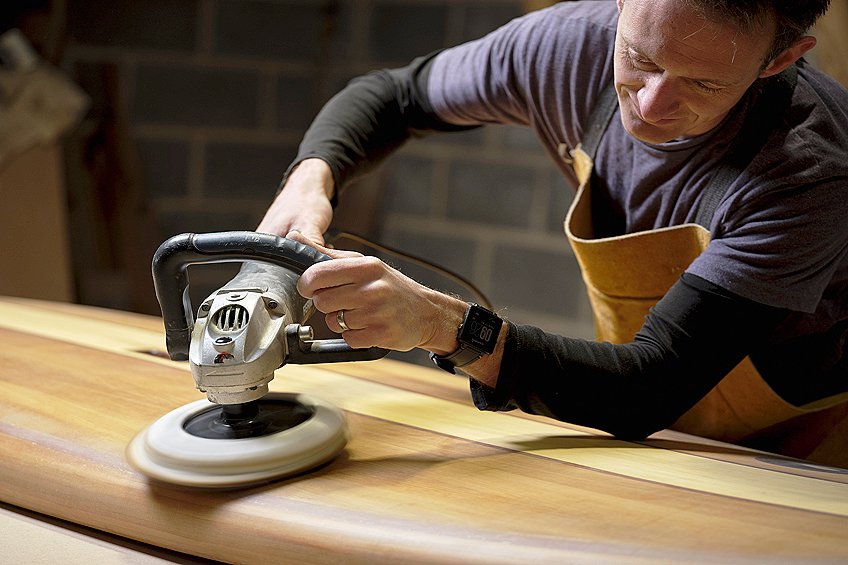
How to Sand Furniture – Tips and Tricks
Now that we have established a good understanding of what to look for in the best sander, it is time to see how to use these tools. Any power tools require a certain level of knowledge and caution when using them, because there are always safety risks involved. Sanding is also a very lengthy, labor-intensive process, so you will need to know the best tricks for making the job go easier. Here are some helpful things to know when using a sander furniture tool.
- Always wear the right safety equipment. Sanding tools need to be handled carefully, and the appropriate safety gear should always be worn when working with such a tool. This is because there will be dust and debris flying around while you work with this powerful, moving, abrasive machine. Whenever you use a sander, always wear goggles/eye protection as well as protective gloves. You may also want to wear a face mask to avoid inhaling any sanding dust.
- Sand with the grain of the wood. When sanding wood, make sure to follow the grain. Sanding against the grain can result in your destroying the natural beauty of the wood. It is really important to follow the wood grain carefully when restoring furniture in order to make sure that you maintain the natural appeal of the wood.
- Start slow. Especially for beginners getting their first feel for using a wood sander, it is a good idea to start slow and gradually speed the machine up. If you start with the machine at full speed, you may quickly lose control and ruin the piece of furniture. Starting on a slow speed allows you to get a feel for the sander, and gradually find the right speed to work with.
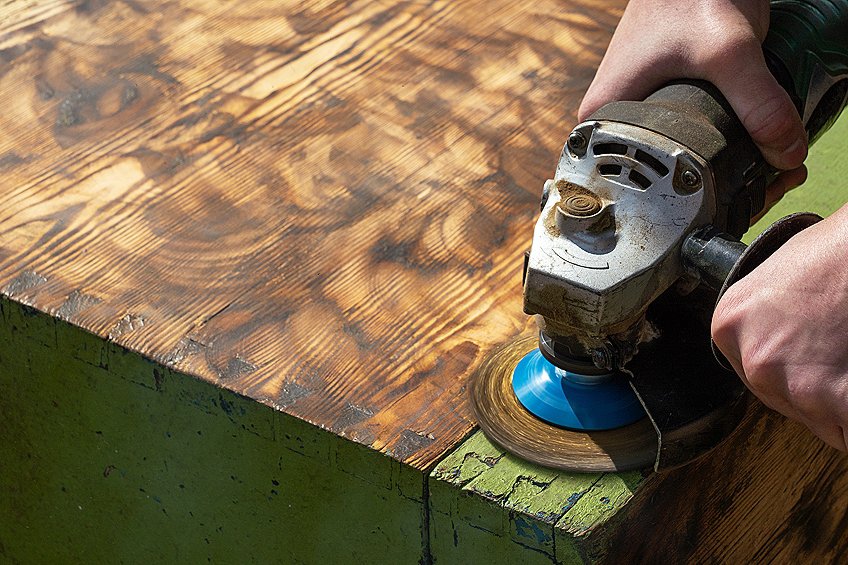
- Go from coarse to fine sandpaper. When you start to sand a new piece of furniture, begin the process with coarse-grit sandpaper. This is good for sanding the first layer and getting through paint or varnish. As you progress, gradually change the sandpaper grit to a finer option. This will help you to achieve a smooth and even finish at the end. When finishing a surface with rough sandpaper, there will still be sanding marks and lines visible. Generally, 220-grit sandpaper is about as fine as you need to go when finishing wooden furniture.
- If you are working with a really oddly shaped surface, you can make special sanding sticks. For this, you can take a dowel rod and glue sandpaper around it to cover the entire surface of one end. This can be used to sand difficult-to-reach places and awkward contours.
- Do not press the sander too hard when you are using it. Power sanders should have enough energy to sand surfaces without needing to press down too hard on them. Rather go over the surface multiple times than press down hard to try to sand deeper into the wood. Pressing on a power sander can affect the motor and potentially damage the tool. If you need more power, try to turn the speed up or use a stronger sanding paper. Rather sand the wood in many layers than try to press down hard to sand deeply. You can always increase the speed of the sander, or use a tougher type of sandpaper. Pressing down on the sander could damage the motor, as well as affect how smooth the sanded finish is.
The Best Sander for Furniture
Now that you have a better understanding of the different types of hand sanders, it is time to find the right product. With so many different product options and brands available, finding the best sander for furniture can be a real challenge.
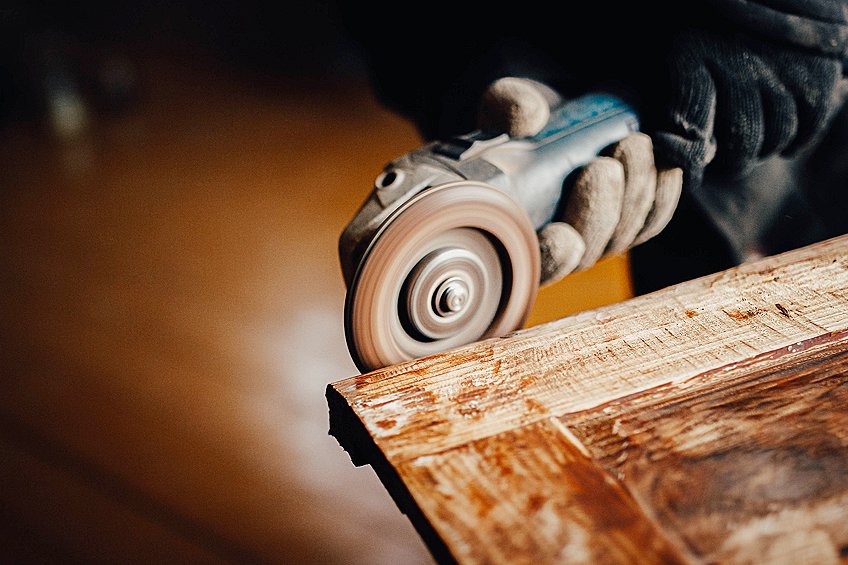
Considerations for the Best Sander for Furniture
While each different wood sander has unique features, there are still a few common things found between each type of sander. When looking for the best sander for woodwork, it is really important to understand these different features and to know exactly what you want to get from each one. While certain factors will change with different models, here are the common considerations to look at when buying the best sander for furniture.
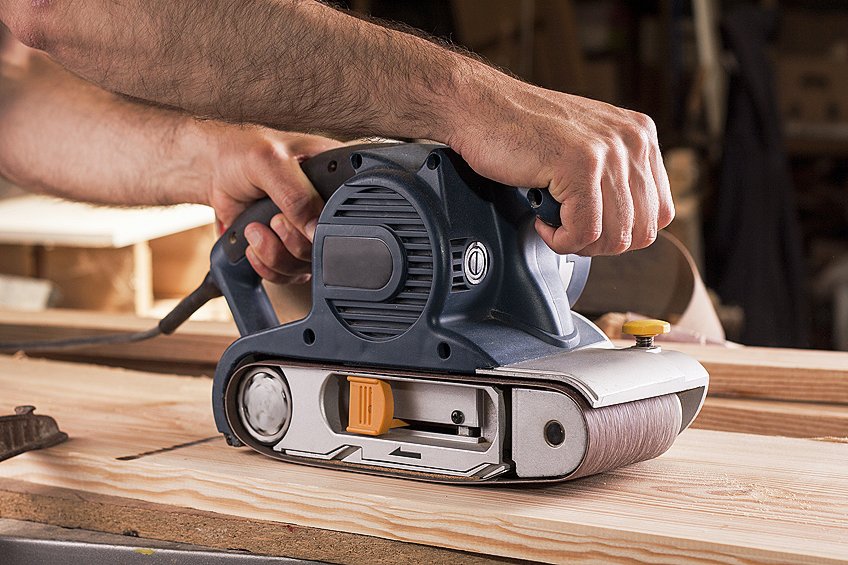
Power
Of course, one of the most important considerations when choosing a sander is to understand how powerful it is. Orbital sanders measure this in orbits per minute (OPM), which refers to just how fast the sander can run. A good measurement here would be 14000 OPM. Generally speaking, the higher the power, the better the sander. You do not always want to run the tool at full volume, but this should be able to be changed through the speed control.
Sanders have a motor that is measured by amps. Usually, they are around 2 or 3 amps. Here, you also have to consider what the power source is. Most units have a cord that plugs into a socket. This is advantageous because it allows for a limitless power supply, and you can run a more powerful motor this way. Sanders require quite a lot of power, which is why most models use a cord. You can also get battery-operated sanders. These allow you to enjoy more flexibility and mobility, but the power of the tool will likely be limited.
Vibration
The best sander for refinishing furniture should have plenty of sanding power, but you do not want it to vibrate too much. A smooth sander that is easy to control will allow you to work more precisely. If the tool vibrates and jumps around quite heavily, then it will be difficult to direct over various surfaces and details. The less vibration the sander has, the easier it will be to stay focused and in control of lengthy sanding jobs.
Hand Grip
Working with a hand sander can be tiring work, no matter how powerful the sander is. If you are sanding large surfaces in multiple layers, then you will need to make sure that your tool is comfortable to use. An uncomfortable sander can result in blistered hands and a really unenjoyable experience.
The handgrip is not just about comfort though. Sanders move around, shake, and vibrate when in use. Because of this, you will need to be able to efficiently and accurately control your tool. This is important for maintaining your wood, as well as keeping safe when using the sander.
Therefore, sanders should have comfortable, soft grips to make them easier to control. The best sander for furniture will have an adjustable grip or different grip settings that allow you to hold the sander at different angles.
Dust Collection
Dust is inevitable during a furniture sanding job. Having lots of dust can make the work very difficult, as it can cover the area you are working on and inhibit your view of the object. Not only this, but it is also just a mess. Cleaning up lots of sanding dust is really not any fun.
This is why sanders should come with an integrated dust collector. This will include some type of capsule or bag that all the dust pulls into. Of course, the size of the collection system limits the amount of dust that it can hold. If you plan on sanding often and doing bigger jobs, you will want a bigger dust collection system.
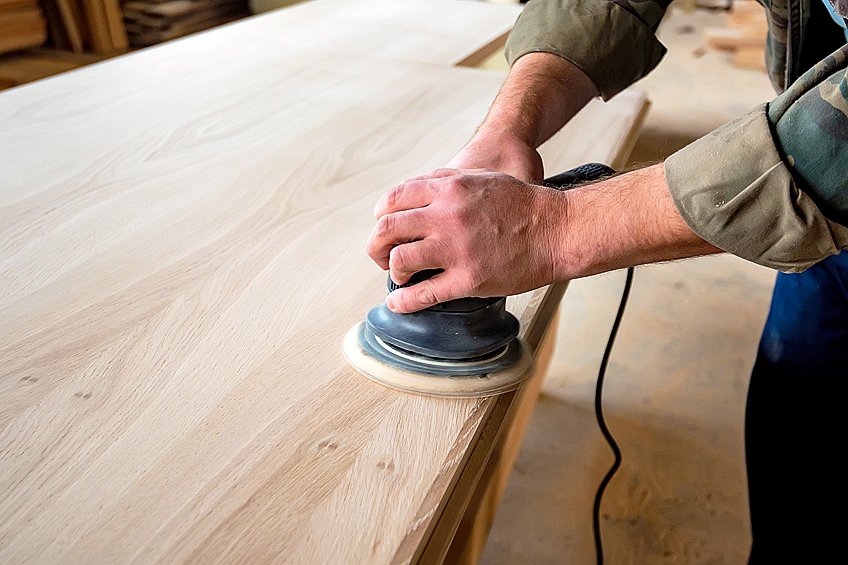
Speed Control
The best sander for furniture should have a variable speed control design. This is either found in a type of throttle control or through a number of different speed switches that you can choose between. Having speed control is important for adjusting the sander to meet your exact requirements. You can apply a more gentle speed when sanding softer areas, and an intense speed for rough work and paint stripping.
Trigger Lock
Hand sanders should feature a trigger lock to make using them much easier. Locking the trigger allows you to give up some control of the tool, and free up your hands a bit more. This makes work less tiring, allowing you to focus more on the sanding motion. You could also lock the trigger and fix or clamp the sander in place, and then feed pieces of wood to the sanding belt or pad. This is a good technique when working with smaller items.
Choosing the Right Sandpaper
You can have the best sander for furniture, but without the right sandpaper, this means nothing. Sandpaper comes in various forms, with each different type making a big difference to your work. It is important not to compromise on quality here, as you really get what you pay for when it comes to sandpaper and abrasives.
The grit is the first thing to understand about sandpaper. This points towards the number of particles present in the paper. High-grit sandpapers have a finer surface and low-grit paper is rougher. Fine sandpapers are good for creating very smooth, fine finishes. Coarse sandpapers are a bit rougher and tougher. Sandpaper grit can range from around 40 to 600, although most sanders will not take much more than 220-grit sandpaper.
Then, there is the size and shape of the sandpaper. Orbital sanders use discs, which range from around 5 to 9 inches in diameter. Belt sanders use strips around 4 inches wide. Otherwise, you can use sandpaper pads that are quartered, halved, or cut into thirds.
Finally, there is the composition of the sandpaper. Sandpaper particles can be made from various different materials. This influences how tough the paper is, and what type of surface is it best to use it on. Usually, you will use aluminum oxide or garnet sandpaper. However, there are also ceramic papers for more intense work, as well as silicon carbide paper, which is great for plastic and metal surfaces.
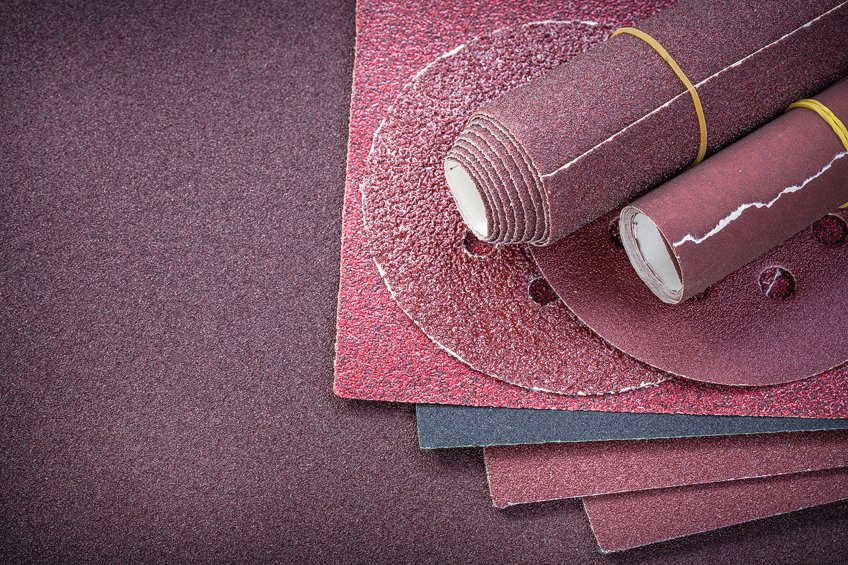
Using a sander for wood is necessary for avoiding unwanted, intensive labor. Sanding becomes much quicker and easier with the best hand sander, allowing you to achieve smoother results. We hope that our guide on the best sander for furniture has taught you everything you needed to know about finding the best hand sander for your project. We wish you a successful time refurbishing old or making new furniture!
Frequently Asked Questions
What Is the Best Sander for Furniture?
This depends on the type of furniture that you are working with and just how intensive the sanding process is. Random orbital sanders are the most versatile choice and can be used across a wide range of wood finishes. Many people prefer to use finishing sanders on furniture, as these allow you to get better detailing and fine work done.
What Sander Is Best for Removing Paint?
Belt sanders are the most powerful, and they are very efficient for removing paint. Any electric sander can do this, though. Just make sure that you are using strong enough sandpaper to get through the first layers of tough paint.
Can You Use a Hand Sander on Drywall?
Yes. Sanding drywall is best done with electric sanders, such as an orbital sander. This makes the job quick and efficient.

I have been into woodworking since 2005 and woodturning since 2011. Because of my love for wood and woodworking, I started woodhappen.com to teach other enthusiasts about how to finish and seal wood, the best woodworking tools, the different types of wood, and everything else related to woodworking! Read more about me here.

